There are millions of blog posts, articles, and videos online that give marketing advice. Google says there are at least 7,050,000 pieces with the phrase “marketing tips.” However, a lot of this content is outdated or just filler.
It can be hard to find useful advice that actually works.
In this article, you’ll see the marketing case studies, which shows how to master social media, email marketing, and PPC. You’ll also learn about how to use these case studies in your own marketing campaigns.
Don’t rely on empty words. Learn effective marketing practices, which are backed by examples and data.
What is a marketing case study?
In marketing, a case study is a detailed examination of how well a tool, tactic, or strategy works. It highlights measurable results, such as increased sales, more visitors, or improved efficiency.
A typical case study includes these key elements:
- Introduction to the customer or clien
- The problem the client needed to solve (similar to problems potential clients might face)
- The solution provided (and why your company or software was the right choice)
- Data showing the results before and after implementing the solution

A case study essentially documents the journey of working with your company. It provides potential customers with a reason to trust your company.
What are the different types of case studies in marketing?
In marketing, three main types of case studies are commonly used:
Third-person or client case studies: These highlight the experience of a specific client working with your company or using your product.
Explanatory case studies: These explore the impact of a phenomenon or tactic, such as a company’s marketing strategy, and its effect on growth. They are based on observation and inference rather than first-hand experience.
Implementation case studies: These go a step further than typical client case studies by focusing on the detailed implementation process.
Case studies can also be categorised by their medium — video or text.
In 2024, video case studies are becoming increasingly popular. Many companies use them as remarketing ads to address potential objections.
Why should you use case studies?
Case studies are a powerful way to prove that your products or services work, showcase your expertise, and build trust with potential customers. Instead of just telling your customers, you can show them through examples, aligning with the old copywriting maxim, “Show, don’t tell.”
Consumers’ trust in advertising is lower than ever. In 2020, only 14% of consumers believed advertising was honest about a product or service. However, this doesn’t mean you can’t build trust through your company’s website.
Consumers trust third-party reviews, testimonials, and data. In fact, 91% of 18-34-year-olds trust online reviews as much as personal recommendations.
To build this trust, you need social proof. Client case studies, especially those featuring interviews with current clients, provide both data and powerful social proof that your product works.
Adding a simple customer testimonial to your website can increase conversion rates by up to 34%. Imagine the impact of a detailed, compelling case study.
1. Email marketing case-study: Your Therapy Source
If you think email is a marketing medium of the past, think again. At Pow New Media, we have hundreds of recent case studies that prove otherwise.
For example, Your Therapy Source achieved a 2000% return on investment (ROI) from our campaigns by using basic marketing automation.

A basic abandoned cart email alone accounts for about 30% of all revenue generated by automations. With POW New Media, setting this up is incredibly easy.
You can leverage our integrations with key e-commerce platforms like WooCommerce, Shopify, and more.
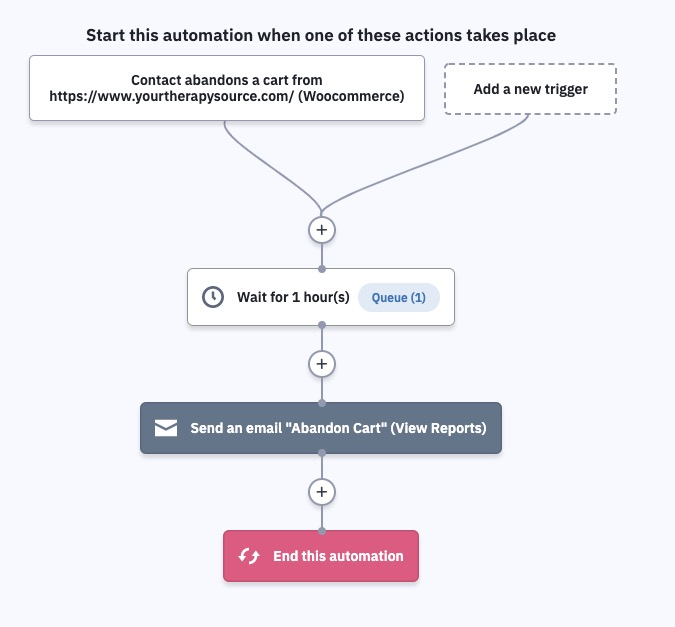
Because the case study details how the company achieved its results, it combines elements of an implementation case study and a regular third-person case study.
2. Instagram marketing case study: Converse
If you look at the top Instagram accounts in clothing, Converse has a much higher engagement rate than its competitors.
With an engagement rate of 1.79%, their social media posts achieve an organic engagement rate over 15 times higher than Nike’s.

Why is that?
Let’s take a closer look at how they achieve these numbers:
When examining Converse’s top Instagram posts, a trend emerges. Collaborations with influential creators and artists — lately Tyler, the Creator — generate significantly higher engagement levels.
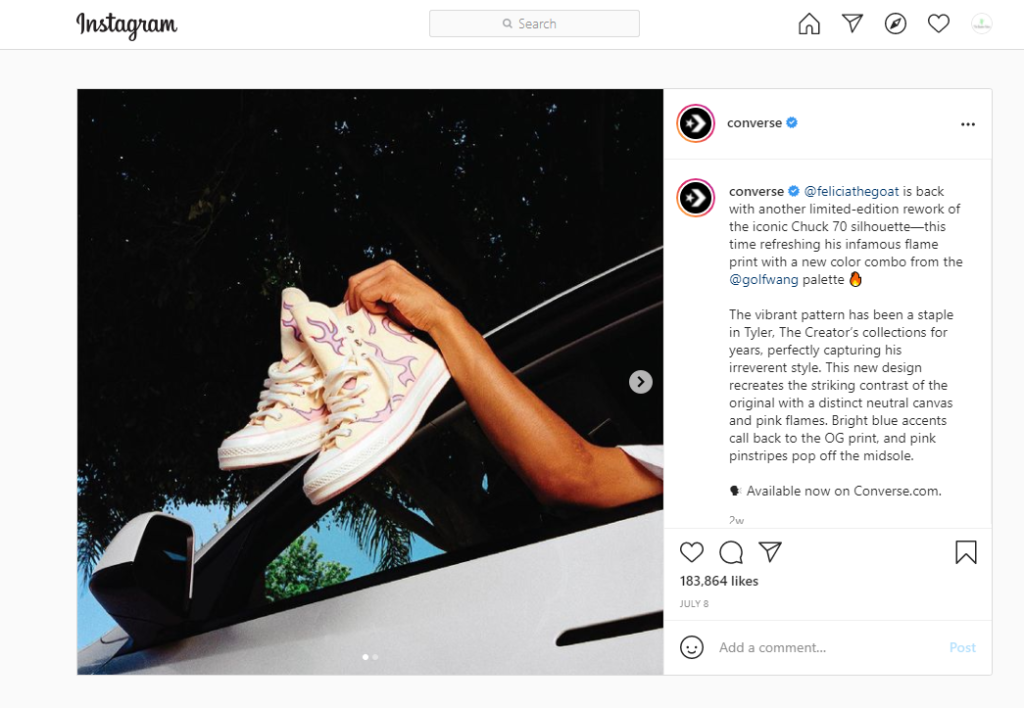
The post promoting their new collaboration shoe received over 183,000 likes in just a few weeks. Converse took it a step further by producing a short film with Tyler.
Combining audiences is a great strategy to reach more people.
This is an example of an explanatory case study.
We started by analysing Converse’s impressive Instagram results and identified the tactics contributing to their high engagement levels.
Since we didn’t work directly with Converse and are observing from an outsider’s perspective, this qualifies as an explanatory case study.
3. Content marketing case study: porch.com
Fractl, a content marketing agency, partnered with porch.com for over a year, achieving 931 unique domain links, 23,000 monthly organic visits, and more.

The case study focuses on results rather than methods, making it a typical third-person case study.
It highlights the results Fractl generated for porch.com without detailing the process.
These case studies are particularly useful for persuading potential customers by demonstrating proven success with similar clients. Showing past results is a strong way to prove your capabilities.
However, depending on your target audience, a more detailed implementation case study might be a better choice.
4. SEO case study: Zapier study by Ryan Berg
This in-depth case study by Ryan Berg is a great example of using explanatory case studies in marketing.
It breaks down Zapier’s SEO strategy, detailing how they created over 25,000 unique landing pages to enhance their search rankings for various terms.
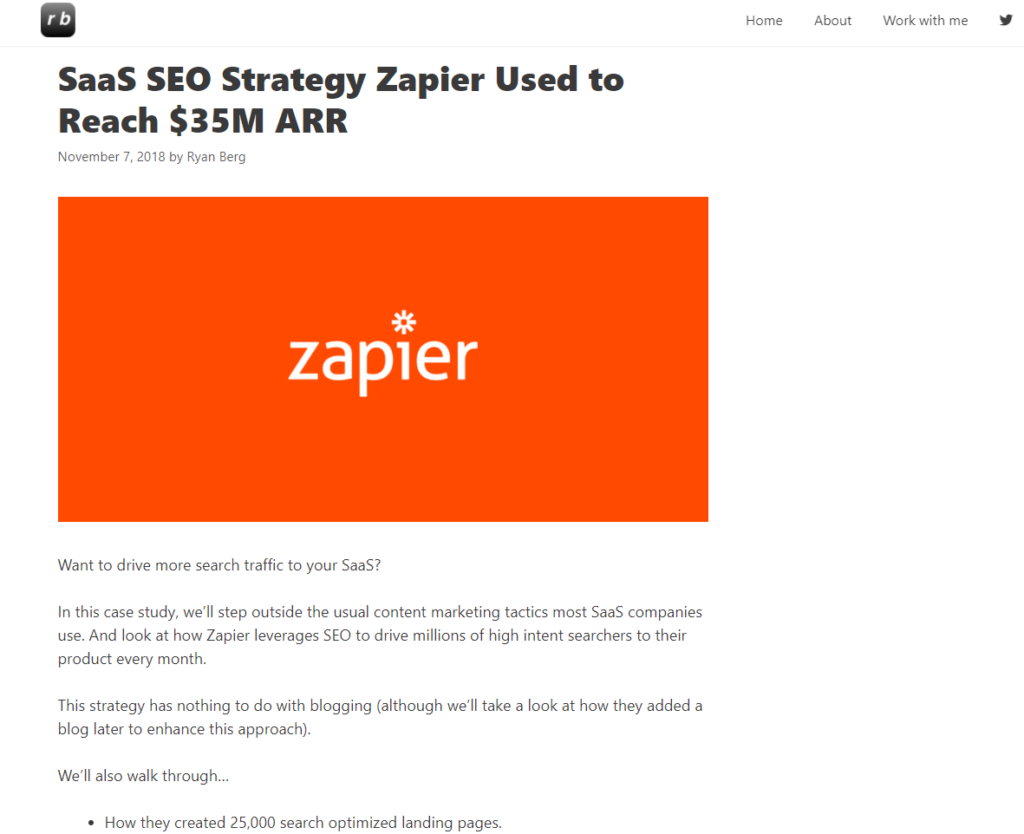
Zapier’s main strategy focuses on targeting relevant long-tail keywords like “app A + app B integration.” This approach has been key to generating significant organic traffic over the long term.
By analysing how industry leaders achieve success, you can leverage their brand power and credibility for your own purposes.
These types of case studies are especially useful if your current clients don’t permit you to reveal details of your tactics. They demonstrate your knowledge & expertise to potential clients, showing that you have what it takes to help them succeed in their industry.
5. PPC case study: Google Ads and Saraf Furniture
In pay-per-click (PPC) advertising, Google was an early innovator and remains the largest digital advertiser globally, with $146.92 billion in ad revenue in 2020.
Even though Google has ample credibility, they still use case studies, particularly in emerging markets like India.
One case study demonstrates how Google Ads helped Saraf Furniture generate 10 times more inbound leads each month and hire 1,500 new carpenters as a result.
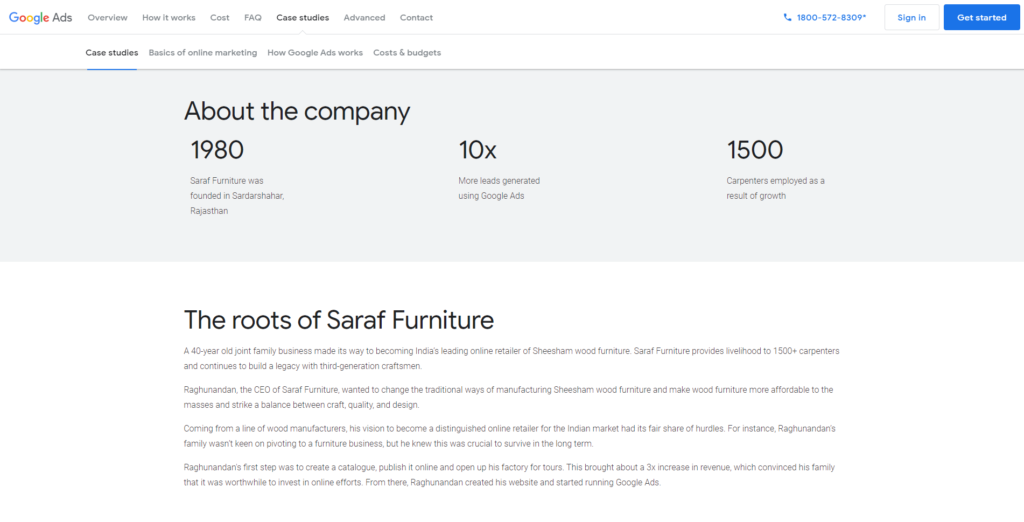
Without delving into the methods, it’s another typical third-person case study aimed at building trust.
6. Video marketing case study: L’Oréal and YouTube
In this case study, various members of L’Oréal’s global marketing team explain exactly how they used YouTube ads to launch a new product.
As a result of the campaign, L’Oréal established their new product as the No. 2 in its category and captured 34% of all mass sales across a network of online retailers.
The case study details how they utilised YouTube at various stages, from building awareness to fostering loyalty. It serves as another example of a third-person implementation case study.
7. Remarketing case study: AdRoll and Yoga Democracy
AdRoll is a remarketing platform that tracks visitors and allows you to show targeted ads across the internet. Their case study with Yoga Democracy effectively highlights the platform’s power.
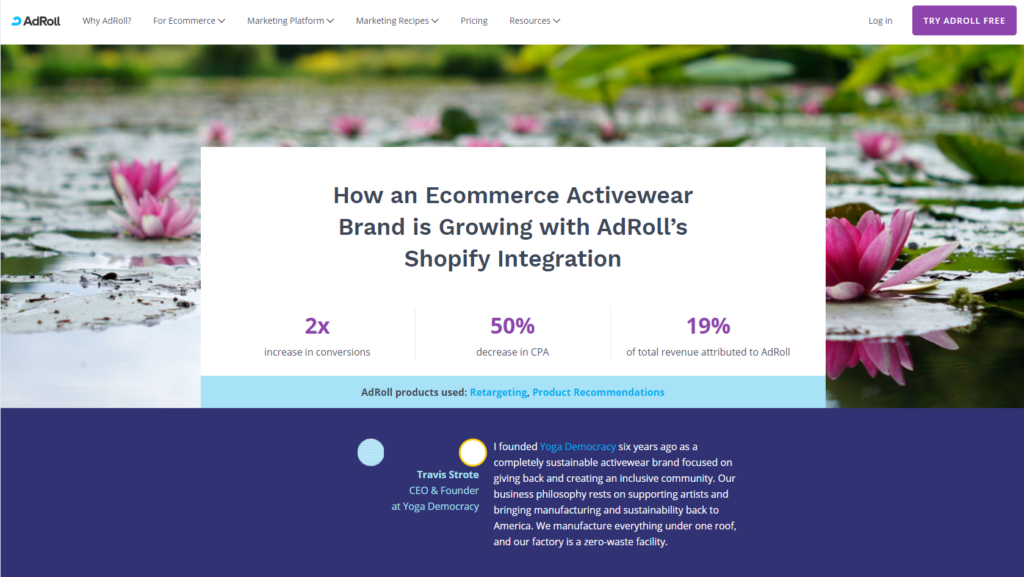
Here are the highlights:
- 200% increase in conversions
- 50% reduction in CPA
- 19% of total revenue attributed to AdRoll
These are impressive metrics to present to potential customers. The case study provides detailed insights into building an effective remarketing campaign, including cart recovery emails and ads.
Due to its detailed approach, this case study can be classified as an implementation case study.
8. Influencer marketing case study: Trend and WarbyParker
This influencer marketing case study from Warby Parker and Trend demonstrates how to effectively use influencer marketing even with a limited budget.
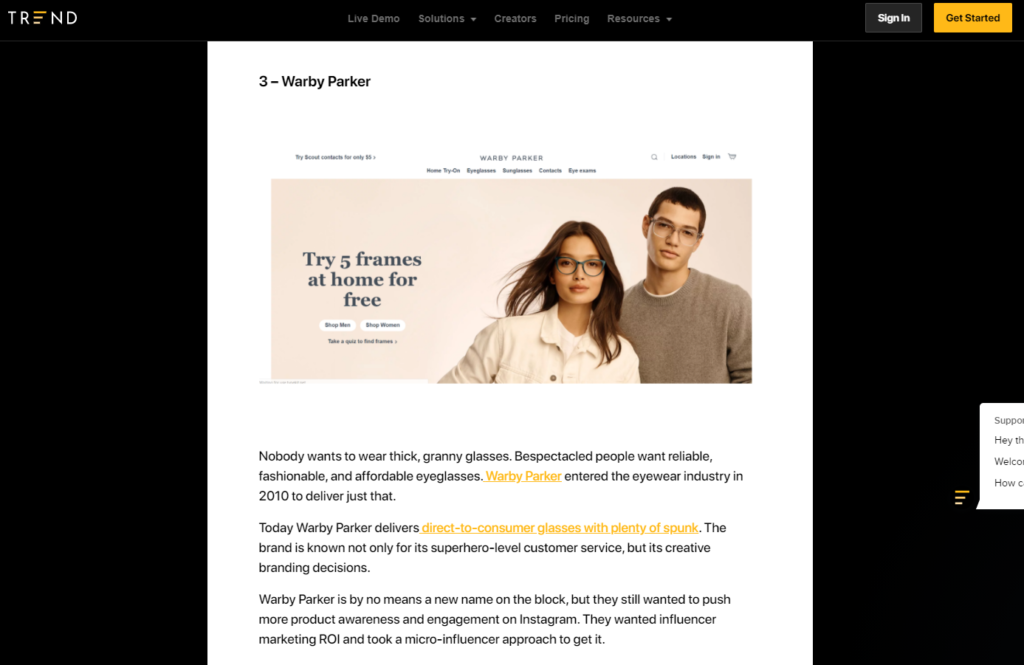
The “Wearing Warby” campaign focused on showcasing influencers wearing Warby Parker glasses in their everyday lives, from eating breakfast to creating art. This approach made brand more relatable & approachable for the influencers’ followers.
This is another third-person case study, as it highlights the results without delving deeply into the details.
9. Customer experience case study: App Annie and Coca-Cola
In this case study, Greg Chambers, the Director of Innovation at Coca-Cola, explains the value App Annie brings to the table.
Instead of specific numbers and metrics, the case study highlights the broad benefits App Annie provides to Coca-Cola’s customer experience.
The video interview format is ideal for building trust with potential customers. This is a typical third-person case study, common in the marketing world.
10. SaaS case study: Asana and Carta
Of course, it’s not just agencies and advertising platforms that benefit from mastering the use of case studies in digital marketing.
Let’s look at an example from outside the marketing industry, specifically for B2B marketers. Asana, a project management platform, helps companies streamline their workflows and enhance efficiency.

It’s a great example of a case study that emphasises the lived experience over specific metrics. This is a third-person case study similar to a client interview or testimonial, which is ideal when it’s challenging to quantify improvements with metrics.
Best practices: How to use case studies in your own marketing campaigns
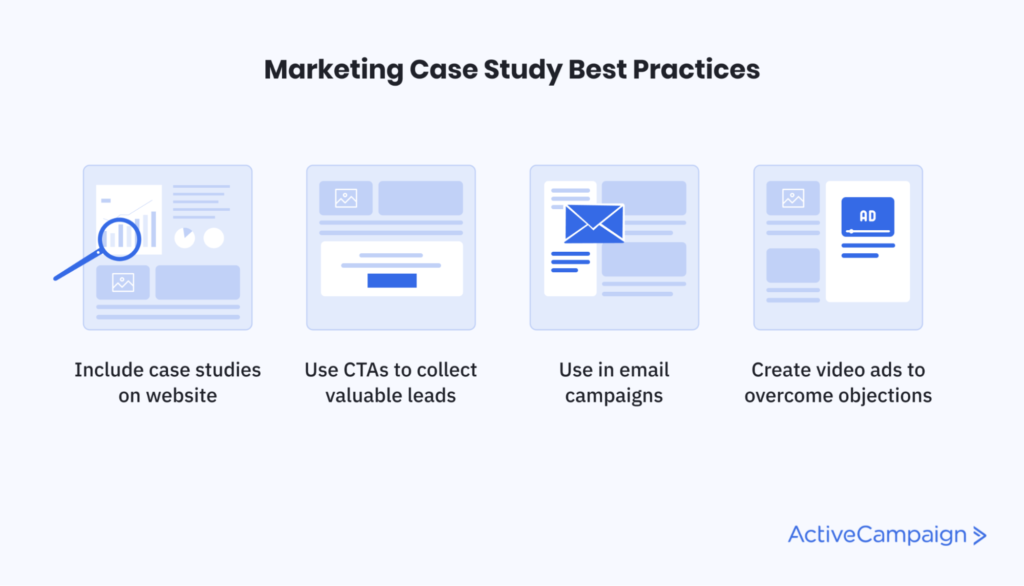
In this section, you’ll discover best practices to maximise the value of case studies in your marketing campaigns. Here are four steps to effectively utilise case studies:
Include a dedicated case study/customer stories page on your website
Most companies with a strong online presence have a case studies page. To stand out, create an enhanced version of these pages by emulating top competitors in your industry. Consider adding a case studies section to your resources page or blog as well.
Build CTAs into your case study pages
It’s unlikely that a random Googler will find their way to your case studies. More often, it’s someone who is considering your product. So, don’t hesitate to include calls to action throughout your case study pages.
Share case studies as part of your email marketing campaigns
Email marketing is the top channel for nurturing potential leads, so make sure to include case studies and customer success stories in your campaigns.
However, it’s crucial to avoid a overly promotional tone. Focus on sharing the unique steps taken to ensure success, providing value rather than just pitching.
Additionally, use case study video ads to address and overcome objections.
When you’re thinking about buying a product, it’s easy to talk yourself out of it.
“It’s too expensive.” “It won’t work for me.” There are many objections potential buyers might have. A case study video can effectively address these concerns & overcome objections.
Don’t overlook case studies in your marketing strategy. Especially in the decision and action stages at the bottom of the funnel, they are a powerful tool.
When used effectively, case studies can help fill your sales pipeline and provide your sales team with qualified leads.
Conclusion
Hopefully, the examples in this article have shown you how to leverage case studies in social media, email, and content marketing to achieve your business goals. You should also have learned how to use case studies to showcase your company’s expertise.
To grow your business, it’s essential to learn from those who have paved the way. Trying to discover all marketing principles from scratch through trial and error can be costly.
If you’re ready to harness marketing automation and email marketing tools that help businesses achieve ROIs of 20x or higher.







